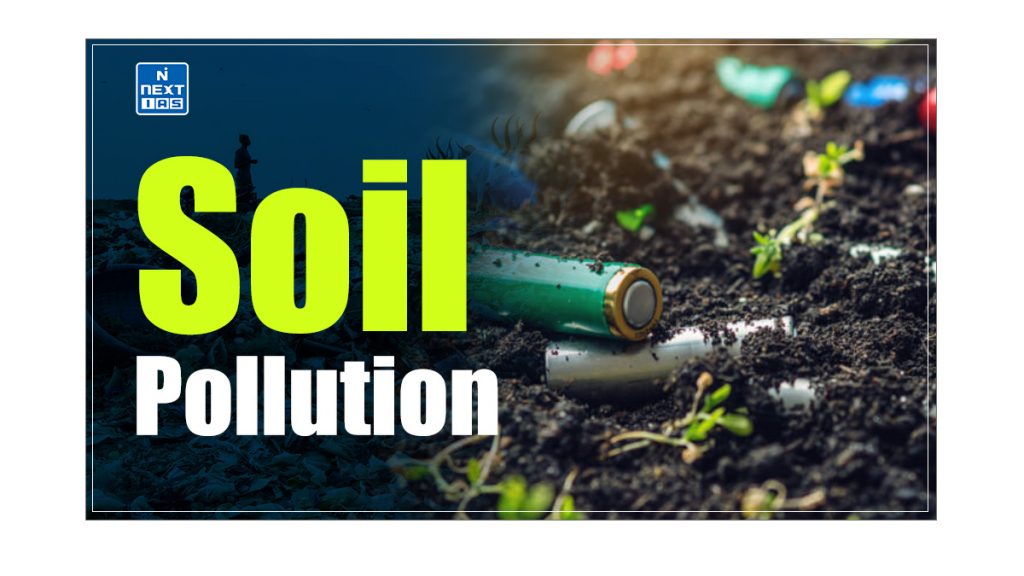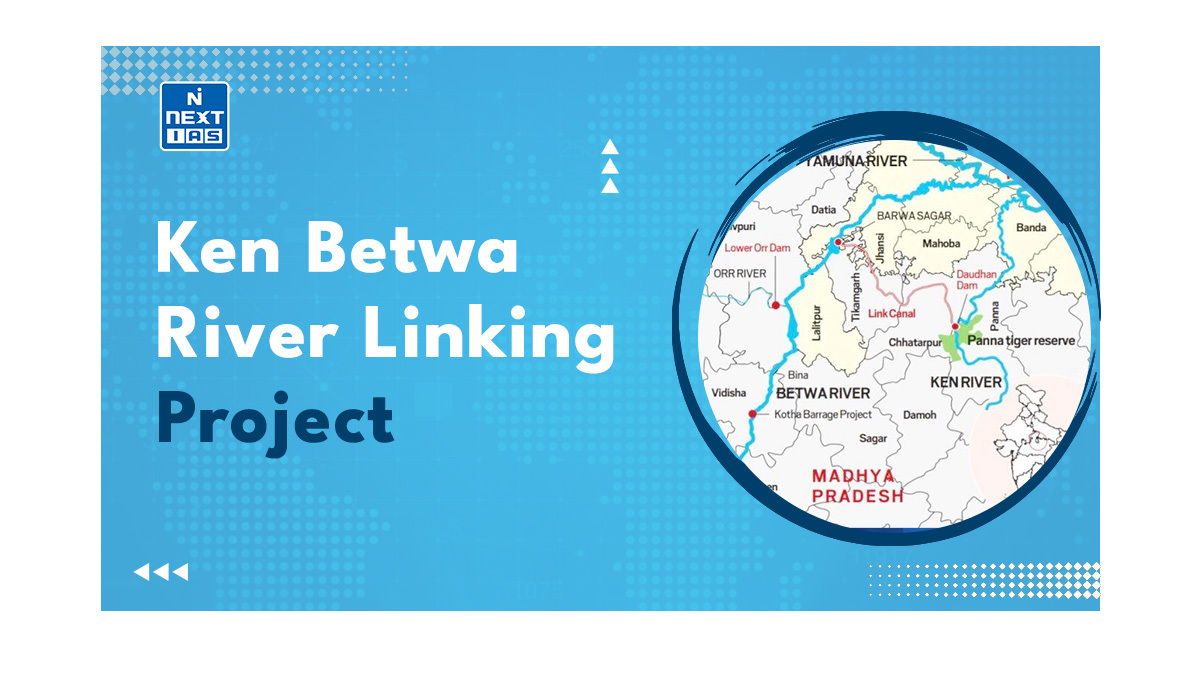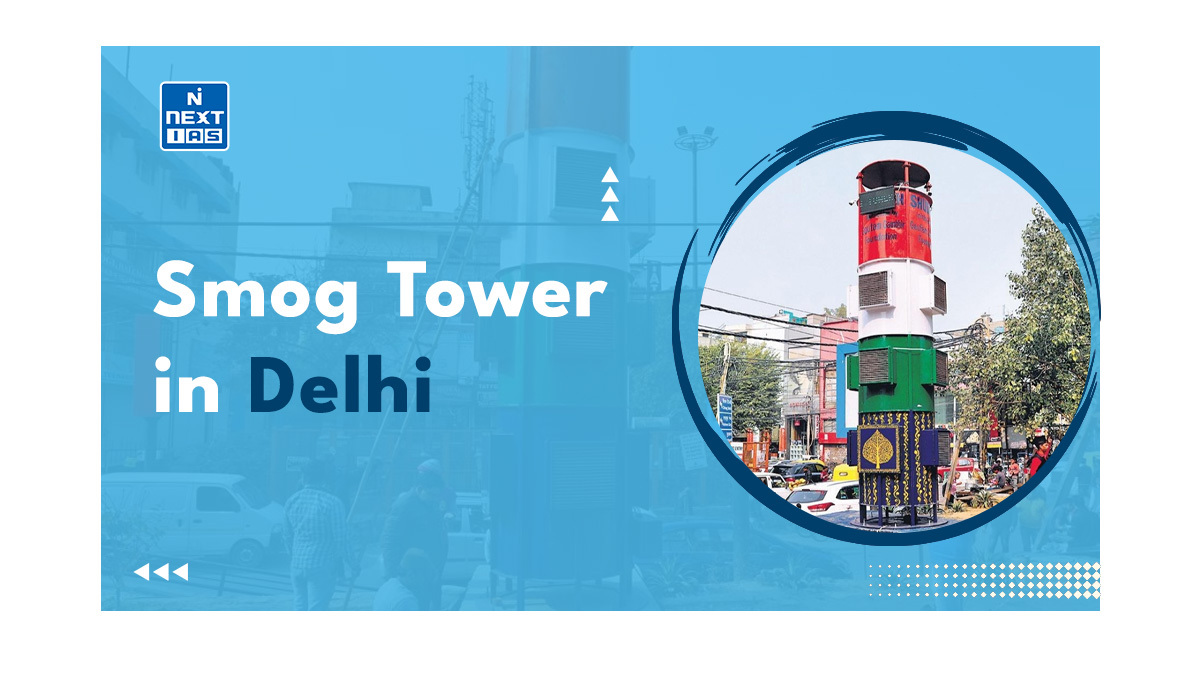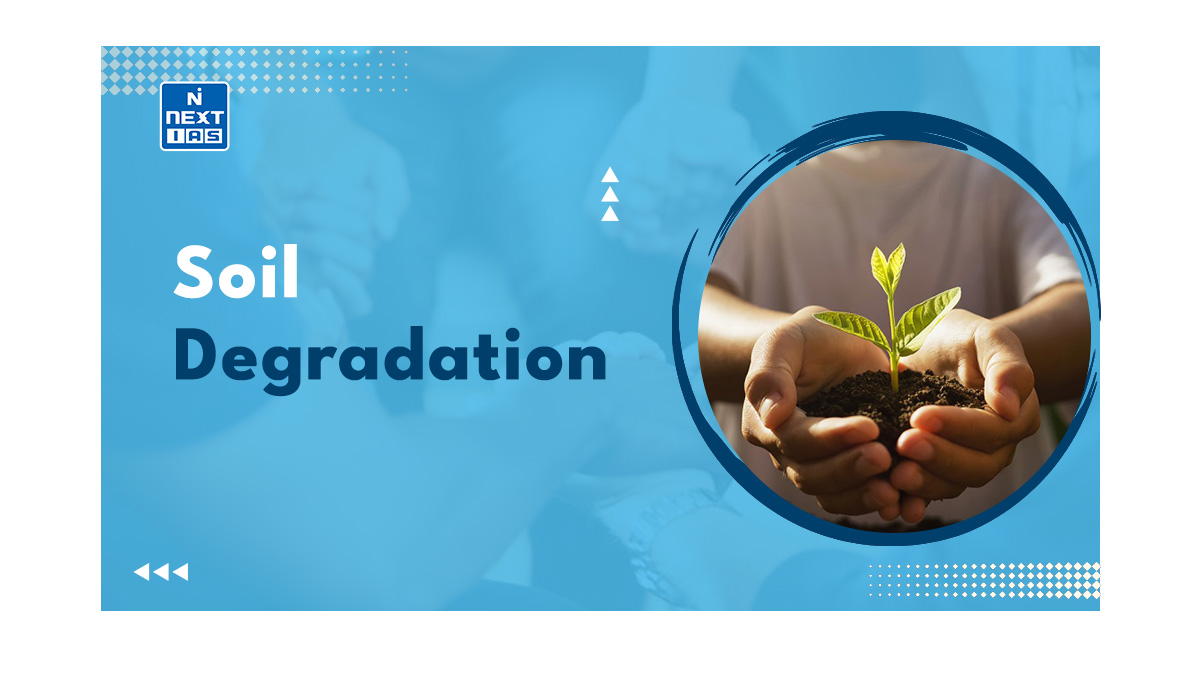
Soil Pollution has emerged as a significant environmental and socio-economic challenge worldwide. It threatens public health, agriculture, food security, and the overall ecosystem. This article aims to study soil pollution in detail, including its meaning, major causes, sources, consequences, control measures, and other related aspects.
What is Soil Pollution?
- Soil Pollution is the presence of toxic chemicals (pollutants or contaminants) in soil in high enough concentrations to pose a risk to human health and the ecosystem.
- The contaminating substances that cause soil pollution are called Soil Pollutants.
- Soil Pollution is one of the prominent types of Environmental Pollution.
| What is Environmental Pollution? – Environmental Pollution refers to the introduction of harmful materials into the environment. – In other words, it is the contamination of the physical and biological components of the environment to such an extent that normal environmental processes are adversely affected. – Environmental pollution can be categorised into several types based on the nature of the pollutants and the media they affect, including Air Pollution, Soil Pollution, Water Pollution, etc. Read our detailed articles on Environmental Pollution, Air Pollution, Water Pollution, Noise Pollution, Thermal Pollution, Nuclear Pollution, Marine Pollution, and Plastic Pollution. |
Causes of Soil Pollution
Some prominent causes of soil pollution can be categorised into two categories –
- Natural Causes and
- Anthropogenic Causes.
Natural Causes
- There are various contaminants (compounds) naturally present in the soil. In addition, various compounds get into the soil from the atmosphere through water precipitation, wind activity, water runoff, etc.
- When the amounts of soil contaminants exceed natural levels, it leads to soil pollution.
- A few natural processes leading to soil pollution are:
- Natural accumulation of compounds in soil due to imbalances between atmospheric deposition and leaking away with precipitation water.
- Natural production in soil under certain environmental conditions.
- Acid Rain and other polluted water could dissolve away some of the important nutrients found in soil and change the structure of the soil.
- The soil also receives toxic chemicals during the weathering of certain rocks.
- Natural disasters like floods, tsunamis, storm surges, etc.
Anthropogenic Causes
- Anthropogenic causes involve several types of human activities, some deliberate, e.g., industrial activities, and some accidental, e.g., accidental spills and leaks.

- Some of the prominent reasons for anthropogenic soil pollution include:
- Industrial Activity: Waste materials from industries linger on the soil surface for a long time, making the soil unsuitable.
- Agricultural Activities: Pesticides, fertilisers, farm wastes, etc., contain organic chemicals that cause soil pollution.
- These chemicals seep into the ground and slowly reduce soil fertility.
- Further, few chemicals damage the composition of the soil and make it easier to erode by water and air.
- Plants absorb many of these pesticides, and when they decompose, they cause soil pollution since they become a part of the land.
- Waste Disposal: Dumping municipal, nuclear, and mining waste leads to soil pollution.
- Accidental Oil Spills: Oil leaks can happen during storage and transport. The chemicals in the fuel deteriorate the soil quality and make them unsuitable for cultivation.
- Construction Activities: Almost any chemical substance handled at construction sites may pollute the soil.
- Other Causes: Some of the other causes of soil pollution include:
- Air pollutants and many water pollutants become part of the soil.
- A major part of lead released in the automobile exhaust settles down on the roadside areas and becomes part of it.
Sources of Soil Pollution
The sources of soil pollution can be seen as follows:
- Soil pollution arises from various sources, primarily due to human activities. Industrial waste is a major contributor, as factories directly discharge toxic chemicals and heavy metals into the soil.
- Agricultural practices also play a significant role, with the overuse of chemical fertilisers, pesticides, and herbicides contaminating the soil over time.
- Improper waste disposal, including plastic, electronic, and hazardous waste, leads to harmful substances leaching the ground.
- Mining activities disturb the soil and release toxic materials, while oil spills from transportation and drilling operations add further pollutants.
- Additionally, urbanisation and deforestation contribute to the degradation of soil quality, altering its structure and composition.
- All of these factors combine to disrupt soil health and its ability to sustain plant and animal life.
Effects of Soil Pollution
Some multifaceted effects of soil pollution can be seen as follows:
- Effects on Health: Plants grown in polluted soil absorb much of the pollution and then pass it on to consumers. This leads to multiple health effects, such as:
- Effect on the genetic makeup of the body causing congenital illnesses and chronic health issues that cannot be cured easily.
- It can sicken the livestock to a considerable extent and cause food poisoning over a long period of time.
- The emission of toxic and foul gases from landfills pollutes the environment and causes serious effects on the health of some people.
- Soil pollution can even lead to widespread famines if the plants cannot grow in it.
- Effects on Plant Growth: The ecological balance of any system is affected by widespread soil contamination. This impacts the plant growth in the following ways:
- Most plants are unable to adapt when the soil chemistry changes radically in a short period of time.
- Fungi and bacteria found in the soil that bind it together begin to decline, which creates an additional problem of soil erosion.
- The fertility slowly diminishes, making land unsuitable for agriculture and any local vegetation to survive.
- Soil pollution makes large tracts of land hazardous to health. Unlike deserts, suitable for their native vegetation, such land cannot support most life forms.
- Effects on Soil Fertility: Toxic chemicals in the soil can decrease soil fertility and, therefore, soil yield.
- Effects on Soil Structure: The death of many soil organisms (e.g., earthworms) can alter soil structure.
Prevention of Soil Pollution
Below are some of the measures that can help control soil pollution:
- Proper Dumping of Unwanted Materials: Waste, if not disposed of well, can create problems for the environment, so it is a must to manage human and animal waste well.
- Nowadays, the control tipping method is used to manage solid waste, and the surface is then used for constructing houses or sports grounds.
- Production of Natural Fertilizers: Instead of chemical pesticides and fertilisers, use bio-pesticides and organic fertilisers.
- Control of Soil Erosion: Soil erosion should be controlled through measures like afforestation and a variety of forestry and farm practices, like covering barren slopes by planting trees, contour cultivation, and strip farming instead of shifting cultivation.
- Public Awareness: Formal or informal public awareness campaigns should be executed to increase awareness about the harmful effects of soil pollution and measures to be taken to control it.
- Proper Hygienic Conditions: People should be trained to follow proper sanitation habits instead of open defection and throwing human and animal waste in the open.
- Recycling and Reuse of Waste: Reusing paper, plastics, glasses, organics, and petroleum products can help control soil pollution.
- Ban on Toxic Chemicals: The use of harsh chemicals like DDT, BHC, etc., which have harmful impacts on animals and plants, should be banned.
Conclusion
Soil Pollution is a critical environmental issue with significant implications for ecosystems, agriculture, and public health. Addressing soil pollution requires a multifaceted approach, including regulatory measures, technological innovations, sustainable practices, and public engagement. By implementing effective solutions and promoting awareness, India and the world can work towards mitigating soil pollution and ensuring a healthier and more sustainable environment.
Important Soil Pollutants: Sources & Health Effects
| Soil Pollutant | Effects | Potential Sources |
|---|---|---|
| Lead | Lead is dangerous even at the tiniest levels, especially when these levels are sustained in time. It is highly toxic to young children, even in low doses, and in higher doses, it can be fatal for humans in general. | Lead paint, mining, foundry, vehicle exhaust, construction, and agriculture activities. |
| Mercury | Mercury can be present in many forms – metal, vapour or salt – and in many compounds, and we may not always be aware that contact has taken place. However, mercury can be inhaled or absorbed through the skin, and mercury poisoning is extremely dangerous. | Mining, incineration of coal, alkali and metal processing, medical waste, volcanoes and geologic deposits, accumulation in plants & vegetables grown on polluted soils. |
| Arsenic | It spreads through water, soil, and air. It’s useful in many ways but toxic in even more. | Mining, incineration of coal, alkali and metal processing, medical waste volcanoes and geologic deposits, and accumulation in plants & vegetables grown on polluted soils. |
| Copper | Excess exposure to copper can be extremely harmful. Copper wiring, insecticides, and other unprotected products rich in copper can also be contaminants. | Mining, foundry activities, construction activities. |
| Zinc | Zinc can easily contaminate the soil and water in areas where it is naturally present or mined. When ingested in excess, whether voluntarily through supplements or involuntarily through exposure to contaminated soil or water, zinc can cause various health problems. | Mining, foundry activities, construction activities. |
| Nickel | While nickel can be naturally found in water and soil, it is often encountered in areas with human pollution. In small quantities, it is eliminated through urine or the intestinal tract; in larger doses, however, it is toxic and may cause severe health conditions. | Mining, foundry activities, construction activities. |
| PAHS (Polyaromatic Hydrocarbons) | PAHs are among the most common pollutants throughout human history because they occur naturally as a result of many basic human activities. In older times, the most widely encountered PAH-producing activity was cooking on a wood-burning stove or grill and heating houses through wood-burning activities. | Coal burning, vehicle emissions, accumulation in plants & vegetables grown on polluted soils, cigarette smoke, wildfires, agricultural burning, wood burning, construction, |
| Herbicides/Insecticides | Herbicides and insecticides are known pollutants. They can be inhaled, ingested through food or water or become harmful through direct skin contact. Depending on the length of exposure and the concentration of the pollutants, they cause serious health concerns, particularly for children and adults in general. | Agricultural activities, gardening. |
Frequently Asked Questions (FAQs)
What is Soil Pollution?
Soil pollution refers to soil contamination by harmful chemicals, waste, or substances that negatively affect the quality of soil, its ability to support life, and the ecosystem. Industrial waste, pesticides, fertilisers, and improper waste disposal cause it.
What is bioaccumulation?
Bioaccumulation is the gradual build-up of toxic substances, such as heavy metals or chemicals, in the tissues of living organisms over time. These substances are absorbed faster than metabolised or excreted, often leading to harmful effects.
What are the causes of soil pollution?
Major causes of soil pollution include the excessive use of chemical fertilisers and pesticides, industrial waste discharge, improper disposal of hazardous waste, deforestation, mining activities, and oil spills.
How to prevent soil pollution?
Soil pollution can be prevented by reducing chemical usage, promoting organic farming, proper waste disposal, reforestation, and controlling industrial emissions.





